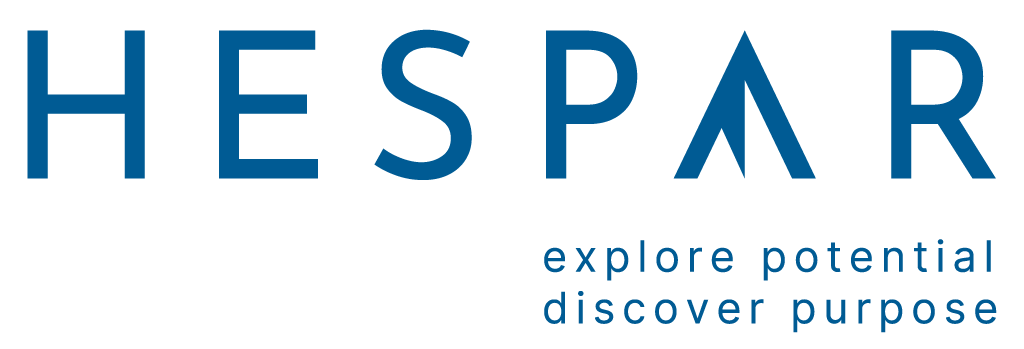The silent struggle in the boardroom
“We have all these brilliant people, yet together we’re underperforming.”
The room fell silent as the CEO’s words hung in the air during our leadership team session. This wasn’t a struggling startup or a company in crisis. This was a market leader with impressive individual talent at the helm.
This moment captures a challenge we encounter repeatedly at HESPAR: organizations filled with exceptional individual leaders who somehow create mediocre collective results. The financial consequences are measurable: missed targets, slower growth, wasted resources. But the human cost, frustration, disengagement, and missed potential, is equally significant.
The anatomy of disconnected brilliance
What causes this disconnect between individual capability and team performance? Through our work with executive teams across industries, we’ve observed consistent patterns:
- Silo thinking that blocks collaboration: leaders prioritize departmental success over organizational outcomes
- Unspoken tensions that erode trust: important conversations happen after meetings, not during the meeting itself
- Unclear expectations that create confusion: different assumptions about decisions and accountability
- Territorial behaviors that waste energy: political maneuvering takes precedence over problem-solving
We see this in many organizations: leadership teams assembled with impressive credentials and individual achievements. On paper, they appear to be all-star teams. Yet deadlines are frequently missed, strategic initiatives stall, and meetings become exercises in blame-shifting rather than problem-solving.
The expertise trap
Harvard Business Review confirms what we’ve observed: teams assembled primarily for expertise rather than collaborative chemistry often struggle to perform cohesively. This creates what we call the “expertise trap”: the false assumption that putting brilliant individuals together automatically creates a brilliant team.
In our experience, leaders often express frustration with team dynamics despite having talented individuals. The disconnect between individual capability and team performance becomes a source of ongoing challenges.
This isn’t surprising when we consider how leaders typically advance in organizations. They’re rewarded for individual achievement, subject matter expertise, and personal drive. These are valuable qualities, but they don’t necessarily translate to team excellence.
The expertise trap manifests in leadership teams through:
- Competing rather than complementary perspectives
- Difficulty finding common ground across functional boundaries
- Overvaluing specialized knowledge at the expense of integration
- Status contests replacing genuine collaboration
Break the pattern with these three immediate interventions
Creating high-performing leadership teams requires intentional effort, but it doesn’t have to be complicated. Here are three practical interventions you can implement immediately:
1. The three-minute check-in
Begin meetings with a personal check-in, asking: “What’s occupying your mind today?”
This simple question creates space for authenticity and connection before diving into business matters. It acknowledges the human element of leadership and builds psychological safety, what Amy Edmondson describes as “a belief that one will not be punished or humiliated for speaking up with ideas, questions, concerns, or mistakes.”
When teams consistently implement this practice, conversations often become more authentic and productive. Team members begin to see each other as whole people, not just functional roles.
2. Brilliant frustrations
Monthly, ask your team: “What do you see that you haven’t yet expressed?”
This invitation creates space for observations and insights that typically remain unspoken. Often, these “brilliant frustrations” contain the keys to breakthrough thinking and innovation.
This approach can help surface important issues that might otherwise remain hidden. For instance, concerns about project timelines or implementation challenges can be addressed before they become critical problems, leading to more realistic planning and better results.
3. Decision-making dashboard
Create clarity around how decisions are made by explicitly categorizing them as:
- Collaborative (consensus required)
- Consultative (someone decides after gathering input)
- Informative (someone decides and shares the decision)
This simple framework prevents misunderstandings and reduces friction. It acknowledges that not all decisions require the same approach, while ensuring everyone understands their role in each decision process.
By clarifying decision-making approaches, teams can reduce confusion and accelerate implementation. Many leadership teams discover they’re attempting to reach consensus on matters that could be handled more efficiently through other decision methods.
From brilliant individuals to collective intelligence
When leadership teams move beyond the expertise trap, something remarkable happens. The climate shifts from competitive to collaborative, from protective to generative. We see this transformation reflected in concrete outcomes:
- Meetings become energizing rather than draining
- Cross-functional projects accelerate rather than stall
- Innovation emerges at the intersections between departments
- Execution improves as alignment replaces confusion
This climate shift doesn’t happen overnight. As we tell our clients, “Team development isn’t an event, it’s a journey.” But by implementing these three practical interventions consistently, you create momentum towards a team culture where:
- Everyone feels safe to contribute their best thinking
- Differences become strengths rather than sources of conflict
- The whole truly becomes greater than the sum of its parts
The ultimate competitive advantage
In today’s complex business environment, no individual leader, no matter how brilliant, can navigate challenges alone. The ability to transform individual expertise into collective brilliance isn’t just nice to have. It’s a crucial competitive advantage.
Leaders who invest in team development often discover that their collaborative dynamics become a distinctive strength. While competitors might replicate strategies or products, the way a team works together is much harder to copy.
The question isn’t whether your leadership team can transform. It’s whether you’ll create the conditions for that transformation to happen.
Stay curious. Explore our updates by subscribing to our newsletter.

